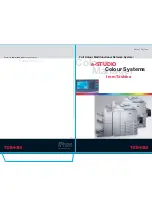
39
Copyright © Acronis, Inc., 2000-2010
Tower of Hanoi overview
The Tower of Hanoi scheme is based on a mathematical puzzle of the same name. In the puzzle a
series of rings are stacked in size order, the largest on the bottom, on one of three pegs. The goal is
to move the ring series to the third peg. You are only allowed to move one ring at a time, and are
prohibited from placing a larger ring above a smaller ring. The solution is to shift the first ring every
other move (moves 1, 3, 5, 7, 9, 11...), the second ring at intervals of four moves (moves 2, 6, 10...),
the third ring at intervals of eight moves (moves 4, 12...), and so on.
For example, if there are five rings labeled A, B, C, D, and E in the puzzle, the solution gives the
following order of moves:
The Tower of Hanoi backup scheme is based on the same patterns. It operates with
Sessions
instead
of
Moves
and with
Backup levels
instead of
Rings
. Commonly an N-level scheme pattern contains (N-
th power of two) sessions.
So, the five-level Tower of Hanoi backup scheme cycles the pattern that consists of 16 sessions
(moves from 1 to 16 in the above figure).
The table shows the pattern for the five-level backup scheme. The pattern consists of 16 sessions.
The Tower of Hanoi backup scheme implies keeping only one backup per level. All the outdated
backups have to be deleted. So the scheme allows for efficient data storage: more backups
accumulate toward the present time. Having four backups, you can recover data as of today,
yesterday, half a week ago, or a week ago. For the five-level scheme you can also recover data
backed up two weeks ago. So every additional backup level doubles the maximal roll-back period for
your data.
Tower of Hanoi by Acronis
The Tower of Hanoi backup scheme is generally too complex to mentally calculate the next media to
be used. But Acronis Backup & Recovery 10 provides you with automation of the scheme usage. You
can set up the backup scheme while creating a backup plan.
Acronis implementation for the scheme has the following features:
















































